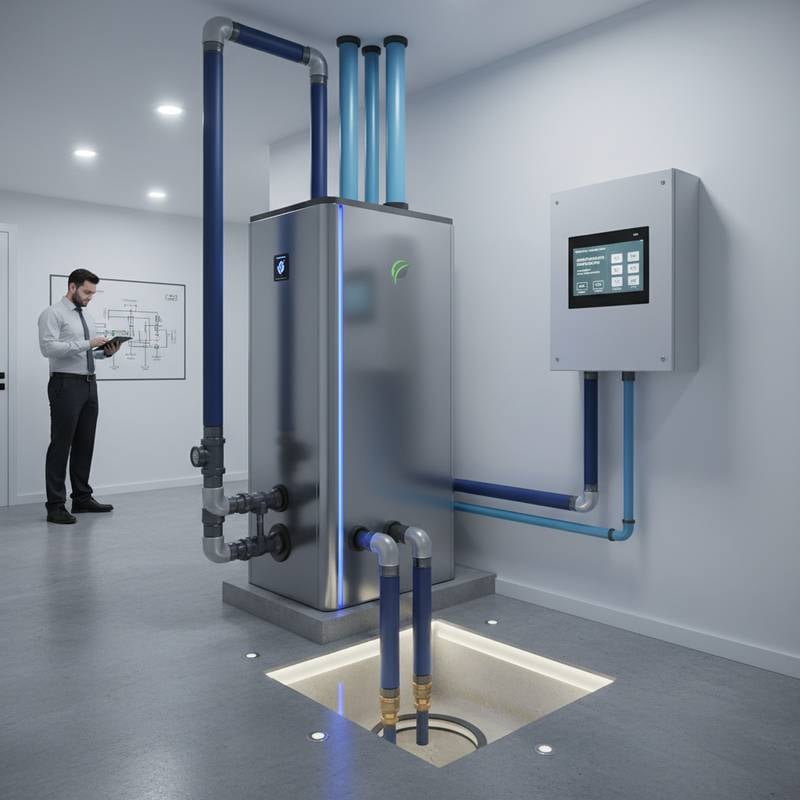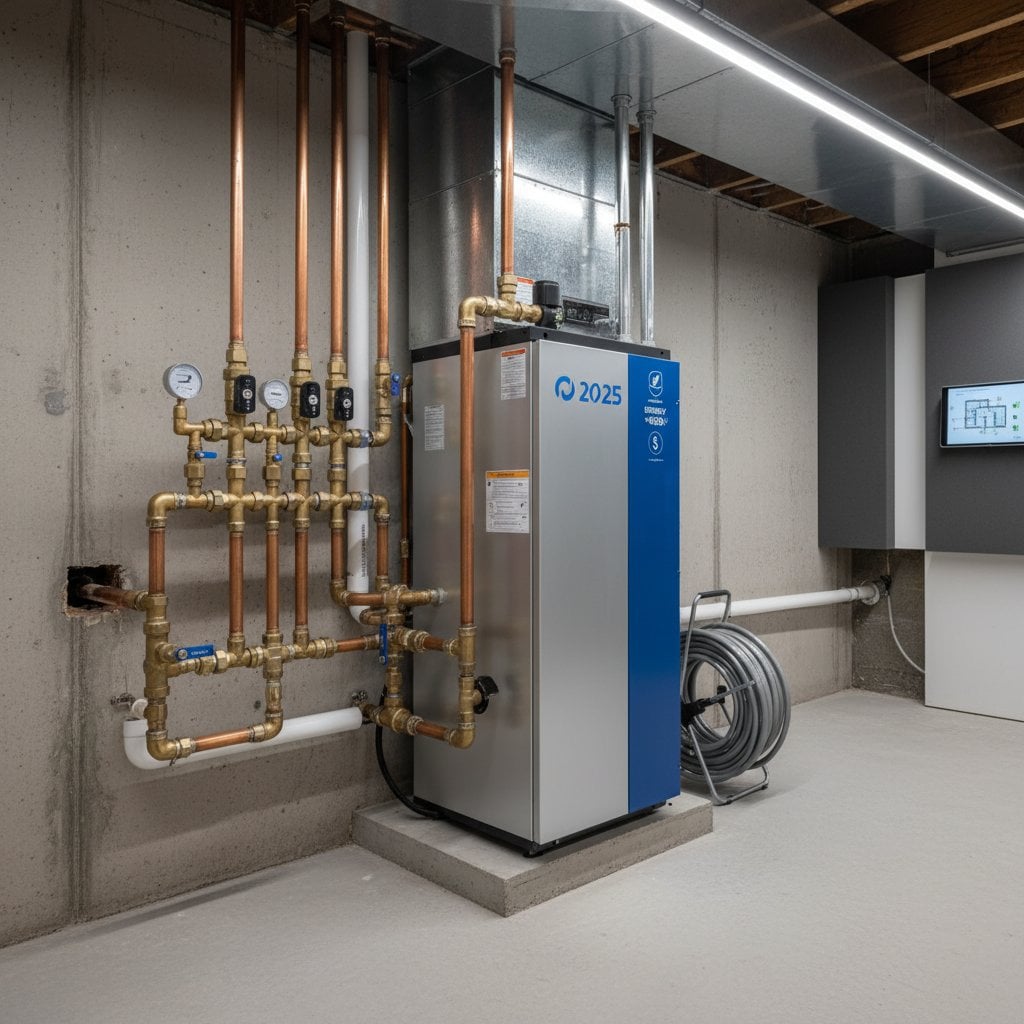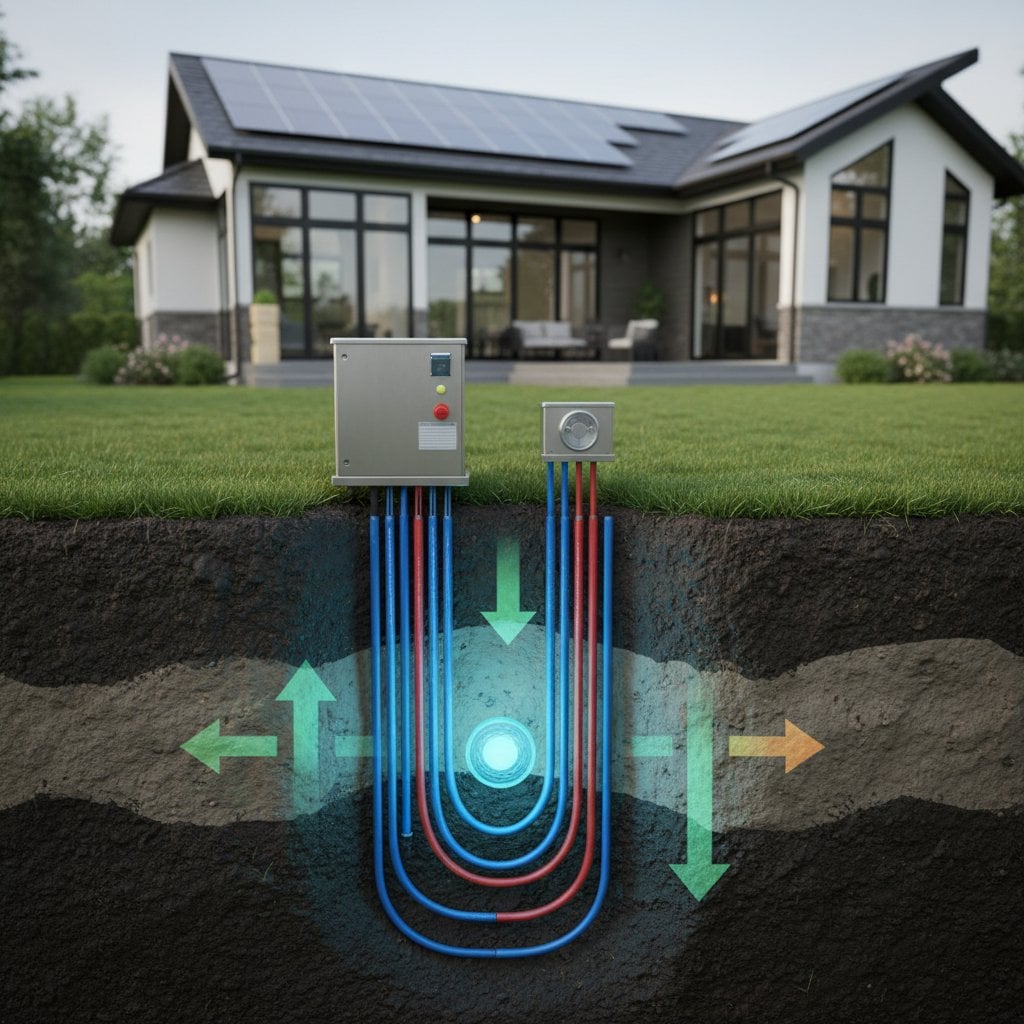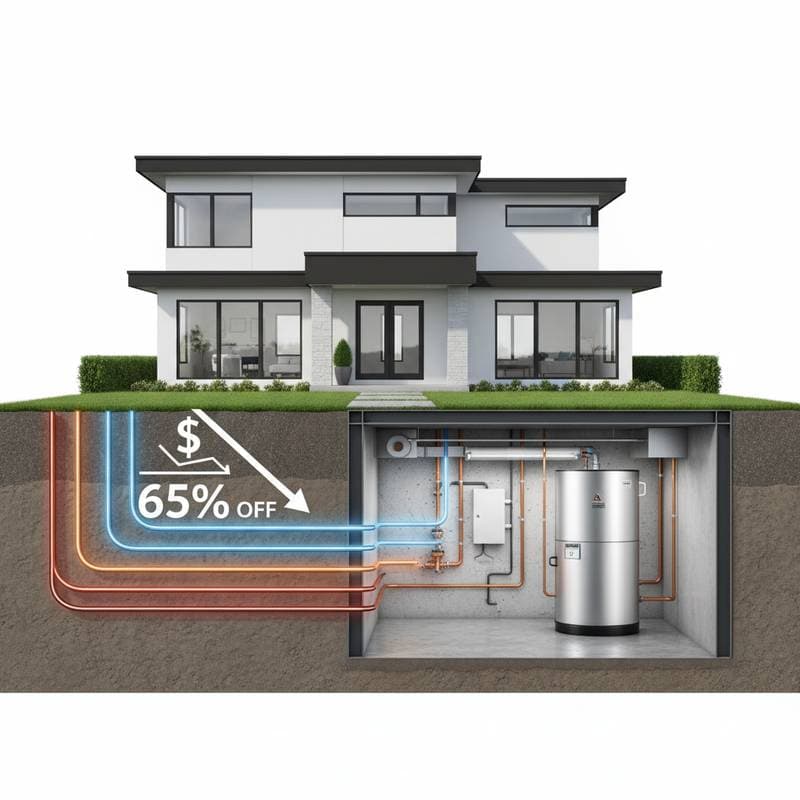Geothermal HVAC systems harness the earth's consistent underground temperatures to provide heating and cooling with exceptional efficiency. Unlike traditional systems that burn fuel or rely on outdoor air, geothermal units transfer heat to or from the ground. This approach delivers stable indoor comfort year-round while minimizing energy use.
These systems operate by circulating fluid through buried loops to exchange heat with the earth. In winter, they extract warmth from the ground to heat homes. In summer, they release indoor heat into cooler soil depths. The result is a reliable, renewable energy source that performs well in diverse climates.
Because geothermal systems transfer heat rather than generate it, they achieve efficiencies of 300 percent to 500 percent. For every unit of electricity consumed, the system produces three to five units of heating or cooling. The U.S. Environmental Protection Agency recognizes geothermal technology as one of the most energy-efficient options for residential heating and cooling. Homeowners often experience savings of 50 percent to 70 percent on energy bills compared to conventional HVAC setups.
Cost Breakdown and Financial Incentives
Geothermal HVAC installation represents a significant upfront investment, yet the long-term returns justify the expense. Costs range from $18,000 to $35,000, depending on property size, loop configuration, and local labor rates. Several elements mitigate this initial outlay and accelerate financial recovery.
- Energy Savings: Expect reductions in utility bills up to 70 percent, translating to hundreds of dollars annually based on home size and usage.
- Tax Credits and Rebates: Federal incentives, such as the Investment Tax Credit, cover up to 30 percent of costs. State and utility programs often add further rebates; verify eligibility through the Database of State Incentives for Renewables and Efficiency.
- Reduced Maintenance: Simpler designs with fewer components lead to lower repair expenses over time.
- Extended Lifespan: Indoor heat pumps endure for about 25 years, while ground loops operate effectively for 50 years or longer.
Homeowners typically recoup their investment within 5 to 10 years through combined savings and incentives. After payback, the system generates decades of affordable, efficient operation.
Practical Considerations Before Installation
Successful geothermal adoption requires thorough site evaluation and planning. The technology suits most properties, but specific factors affect design, cost, and performance.
Site Suitability
Assess available land and soil characteristics early in the process. Horizontal loop systems demand ample yard space for trenching, making them ideal for properties with at least half an acre. Vertical loops minimize surface disruption through deep drilling, suitable for smaller lots.
Soil type plays a key role in heat transfer efficiency. Sandy, moist soils outperform dry or rocky ones. If a nearby pond or lake exists, open-loop systems can utilize water for enhanced performance, though they require water quality testing.
Engage a certified contractor for a thermal conductivity test. This analysis measures ground heat transfer rates and recommends the optimal loop layout, ensuring maximum system efficiency.
Existing Infrastructure
Integration with current home setups varies by building age and design. Properties with existing ductwork benefit from straightforward retrofits, often requiring only minor adjustments.
Inspect ducts for leaks or undersizing before installation. Older systems may need sealing with mastic or replacement to accommodate the geothermal unit's higher airflow. In homes without ducts, high-velocity or ductless options provide viable alternatives.
Installation Timeline
Project duration depends on loop type and site preparation. Horizontal installations proceed quickly, often completing in one to two weeks with standard excavation equipment. Vertical systems involve drilling multiple boreholes, extending timelines to three weeks or more.
Coordinate with contractors to minimize disruption. Schedule during mild weather to avoid landscape damage, and plan for temporary relocation of utilities or landscaping features.
Maintenance and Longevity
Geothermal systems demand minimal upkeep, contributing to their cost-effectiveness over time. Buried components shield against environmental wear, while indoor units feature durable, low-wear designs.
Routine Care
Maintain peak performance with basic tasks. Replace air filters every one to three months, depending on household dust levels and system usage. Annually inspect and top off antifreeze in the ground loop to prevent corrosion.
Arrange professional servicing every two to three years. Technicians check refrigerant levels, pump operation, and flow rates to detect issues early. These steps preserve efficiency and extend component life.
Warranties underscore the technology's durability. Manufacturers typically guarantee ground loops for 50 years and heat pumps for 10 to 25 years. With proper care, many systems exceed these periods without major repairs.
Future Trends in Geothermal Technology
Advancements are making geothermal systems more accessible and versatile. Modular heat pump designs now fit seamlessly into tight spaces, simplifying retrofits for older homes.
Hybrid configurations pair geothermal loops with air-source or solar elements. These setups enhance efficiency during extreme weather, reducing reliance on supplemental heating. Integration with smart home platforms enables real-time monitoring of energy use and predictive maintenance alerts.
Market growth accelerates as production scales reduce equipment prices by 10 to 20 percent annually. Expanded training programs increase contractor availability nationwide. Policy shifts, including expanded clean energy subsidies, further drive adoption toward mainstream use.
Steps to Adopt Geothermal HVAC
Transitioning to geothermal begins with expert guidance. Contact certified installers through organizations like the International Ground Source Heat Pump Association for qualified professionals.
Request site visits from at least three contractors. Provide your utility bills and home blueprints to receive customized proposals outlining loop design, equipment specs, and savings projections.
Evaluate bids holistically. Compare not just upfront costs but also projected annual savings, maintenance plans, incentive applications, and comprehensive warranties. Select a team experienced in your region's soil and climate conditions.
Post-installation, monitor performance via built-in diagnostics or apps. Enjoy immediate benefits: whisper-quiet operation, even temperatures, and substantial bill reductions. Geothermal HVAC aligns financial savings with environmental stewardship, tapping the earth's renewable potential for enduring home comfort.










